This is a free fortnightly newsletter about the New Zealand Net.
If you would like to be notified by email when a new edition is published, please contact ZL1NZ.
Browse our Newsletter Archive and List of Net Tips.
Featured key
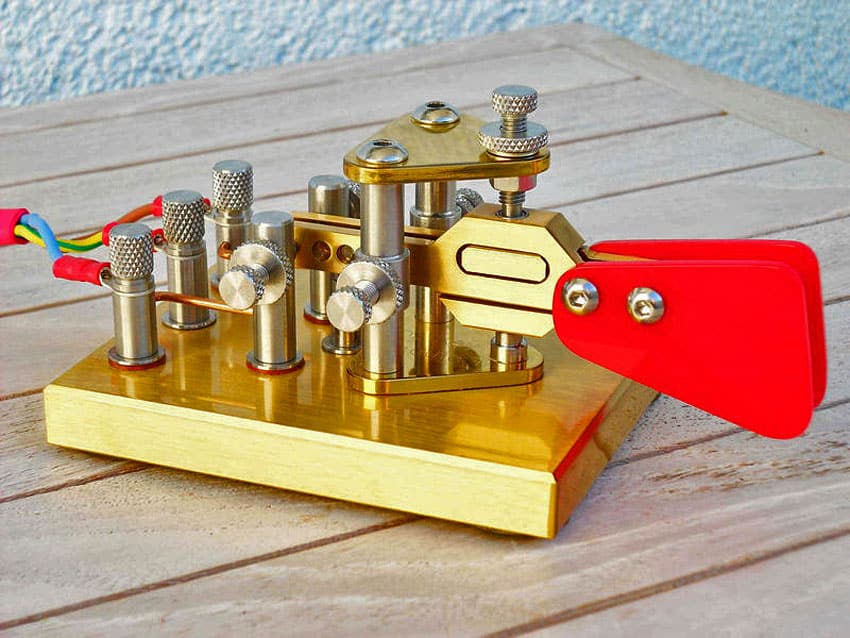
Model 902 paddles by George VK2DLF of morsekeys.com (no longer operating). Photo: DG1UN
* If you have an interesting key for this feature, please send a nice clear photo and a few words describing it.
Quick notes
 Here is a rare photo of a newly hatched telecom technician, with the egg shell still on top of its head.
Here is a rare photo of a newly hatched telecom technician, with the egg shell still on top of its head.
– Ferrymead Post & Telegraph Society on Facebook
New member: Graeme ZL1BDS in Blenheim has just completed his first 25 check-ins to NZ Net and qualified as a Participating Member. Well done OM, and we hope to hear lots more from you.
The new and improved VOACAP Online User’s Manual is now available for free download. VOACAP Online is an amazing propagation analysis and planning tool. The manual, by Jari Perkiömäki OH6BG, will help you understand how to use features like the Propagation Wheel, Propagation Charts and Coverage Area Maps – and you’ll learn how to identify optimal operating times. Get the latest User’s Manual.
Photo flashback
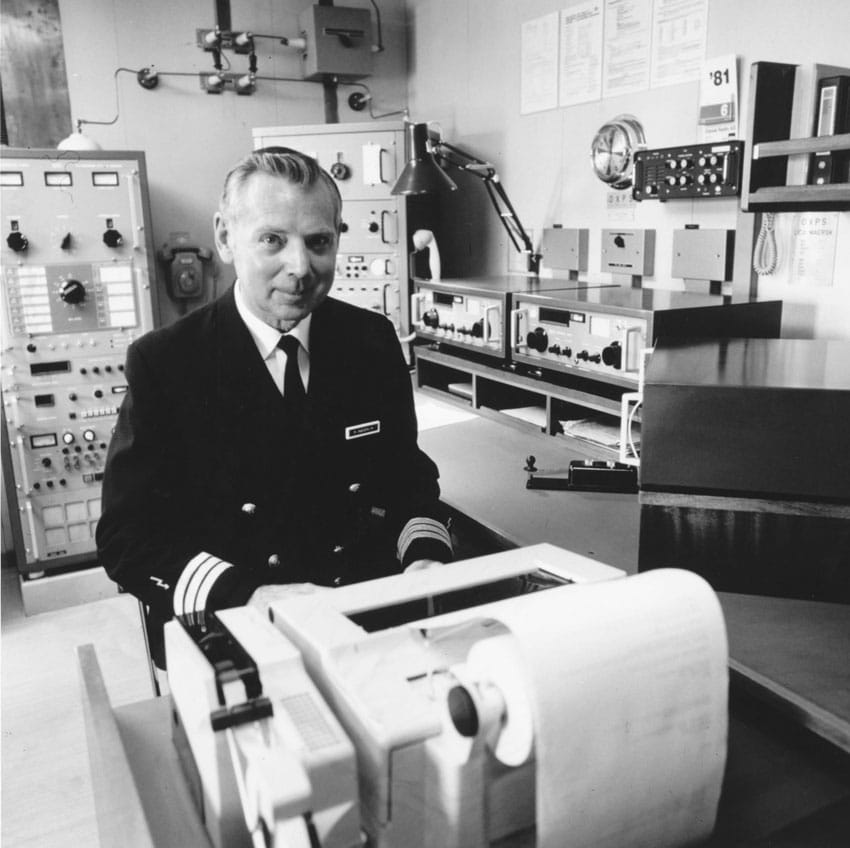
Radio Officer aboard container ship MV Lica Maersk / OXPS
Silent Key: Barry ZL1DD, an old-time CW operator
Born 29 November 1935 in Auckland. Died 30 June 2024 in Chiang Mai, Thailand after a brief illness, aged 88.
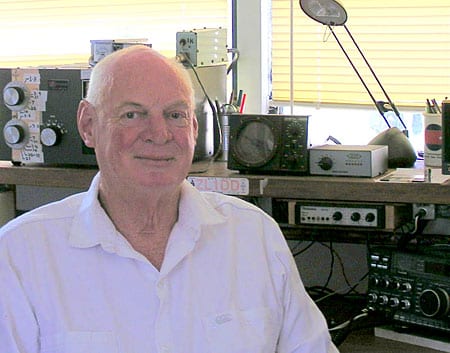 Barry John Kirkwood (Baz) was first licensed in 1953 as ZL1DR, but the pressures of family and work kept him from being very active on radio for much of his working life.
Barry John Kirkwood (Baz) was first licensed in 1953 as ZL1DR, but the pressures of family and work kept him from being very active on radio for much of his working life.
After completing his MA in Psychology, he worked at the University of Sydney, Otago University, and then at the University of Auckland where he taught and also earned his PhD.
For many years his callsign was ZL1BN. When his old friend Bert ZL1DD died, Bert’s family asked Barry to take the callsign.
Moving to Waiheke Island and purchasing a homestay property gave Baz the opportunity to set up his dream ham station and he enjoyed sharing it with others. He had a Yaesu FT1000D with a set of Zedder paddles, and a Viewstar 2x 3-500Z Linear amplifier.
Signal Hill was a superb DX location, about 90m above the beach. The antennas were a Force 12 C-4SXL rotary beam (two elements on 10, 15, 20 and 40m) with a 15m tower. On 80m he used a dipole at 20m fed with 450-ohm ladder line to antenna tuners so he could work all HF bands with this antenna.
He had a dedicated radio shack with a bed and an extensive radio library, including a QST magazine collection back to 1928. A well-equipped home workshop was used for radio and general construction, repair and maintenance. He worked mainly HF CW and Waiheke Island (OC201) was in demand from DX stations.
Barry sold his Waiheke property in 2006 and moved to Thailand to take up a one-year contract working for an NGO. He enjoyed the lifestyle and stayed on in Thailand meeting and marrying his Thai wife, Pan. He was unable to get a Thai callsign as there is no reciprocal agreement with New Zealand. He operated from the RAST club station HS0AC in Bangkok until that station was destroyed by floods. Undaunted, he helped build the HS0ZIA super station near Chiang Mai and was also on the team working contests from there.
Baz’s amateur radio interests included HF CW, DXing and contesting, collecting boat anchor vintage radios and home-building gear, especially antennas. He also collected morse keys and headphones.
For many years Barry entered the NZART Sangster Shield QRP CW contest and was Open Section winner as ZL1BN in 1971 and as ZL1DD in 2000 with podium places in 1972, 1987, 1991, 1995 and 2002. On learning that the original Shield was lost back in the 1990s (when it was posted out to winners each year), Barry generously commissioned a replacement Shield and leader board which was presented to NZART at the 2017 Rotorua Conference. The replacement is now on permanent display at the NZART Headquarters.
Barry was a member of FISTS (#9026) and the founder of New Zealand Straight Key Night.
He is survived by his wife Pan, and two adult daughters: Viki (in Sydney) and Sara (in London).
– Vaughan ZL1VH & Glen ZL2KZ, with additional notes from Neil ZL1NZ
E51KEE now in Aitutaki
After about a week and a half operating from Rarotonga, Cook Islands, Steve ZL2KE/E51KEE has relocated to Aitutaki Atoll, where he will operate until 6 August.
In a QSO from Rarotonga with ZL1NZ on Monday 29 July, Steve reported that huge waves, caused by an overnight storm, had toppled his multiband vertical which had been positioned just above the high tide line. Fortunately, the aerial was discovered, washed farther up the beach, and the plan was to reinstall it the following day, not so close to the sea. Steve was also using an end-fed wire, a vertical for 15 metres (pictured below) and a 2-element yagi for 10, 12 and 15 metres.
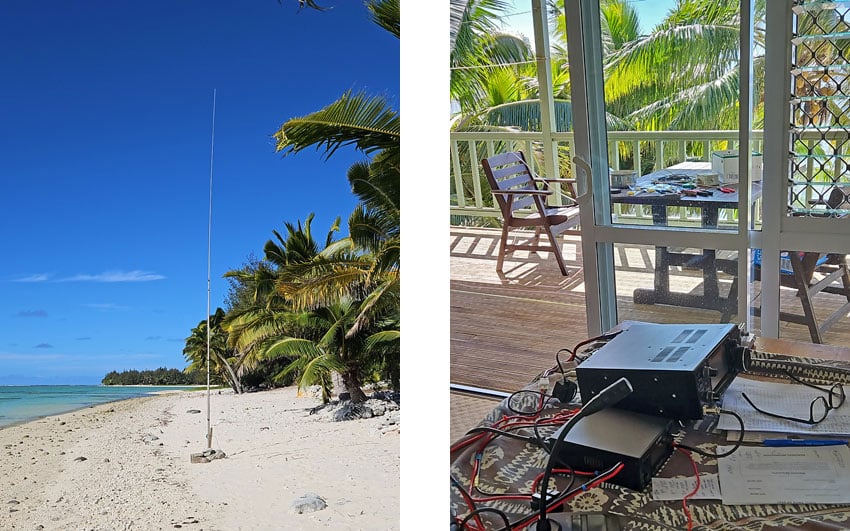
The setup in Rarotonga includes a 15m 1/4 vertical and an IC-7300 transceiver
Steve says: “WX is 26° max, HOT when going back and forth, up and down, doing antenna work. Have spent hours on the antennas.
“17m has been the best results for me. Have made contacts on all bands 40 – 10. 80m is dead here, a shame with a very low noise level. With good conditions pile ups have been massive, greater than anything I have experienced.
“Jim E51JD says it has been years since any CW op has been here.
“Solar indices have been bad for propagation, and the forecast is grim – but Raro is still holiday paradise.”
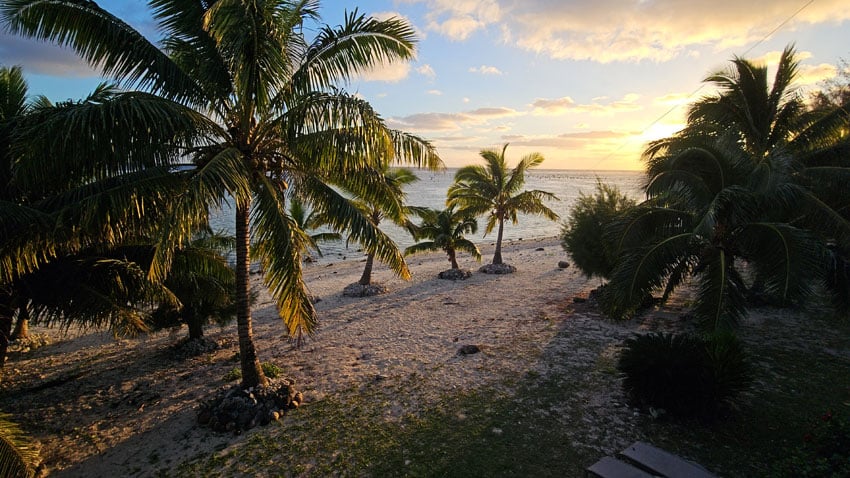
The view from the Rarotonga beach house
Steve had an amusing few minutes at Auckland airport, preparing to depart for Cook Islands:
 6.05 AM, at the final security check of our Rarotonga holiday, I was sent aside for a special inspection. Why? My laptop? BT headphones? IC-7300?
6.05 AM, at the final security check of our Rarotonga holiday, I was sent aside for a special inspection. Why? My laptop? BT headphones? IC-7300?
The friendly security officer bypassed the 7300 – in a carefully padded carry-on bag – and asked if she could inspect my smaller plastic bag.
‘Ah ha!,’ I said to her, ‘You will have never seen anything like this!’
It was my Ukrainian CW paddle! She was actually interested to know that Morse Code is used by so many around the world.
Net numbers

NR40 R ZL1NZ 47/44 AUCKLAND 0900Z 1AUG24 = JULY QNI E51KEE 1 VK3DRQ 29 VK4PN 21 ZL1AJY 8 ZL1ANY 28 ZL1AYN 13 ZL1BDS 17 ZL1NZ 29 ZL1PX 22 ZL2GD 14 ZL2GVA 3 ZL2KE 5 ZL2LN 10 ZL2TE 15 ZL3TK 11 ZL4BDG 1 ZL4GW 5 ZL4KX 13 ZL4LDY 17 TOTAL 262 QTC 38 = ZL1NZ
Adding Morse key data to ADIF standard
By Graham G3ZOD
Amateur radio programs such as electronic logbooks, and services such as Club Log, exchange QSO information using a standard format known as ADIF (Amateur Data Interchange Format). Currently this covers a wide range of QSO items such as callsign, name, location, mode, band, POTA and SOTA. Reasons to do this may be to transfer QSOs from one logbook program to another or upload QSOs to services such as Club Log and Logbook of the World (LoTW).
While many typical QSO items are included, currently this does not include the type of Morse key used by either a the sending station or the contacted station. Adding Morse key information to ADIF would allow possibilities such as transferring Morse key information between logbook programs and applying for awards or submitting contest logs that require use of specific types of Morse key.
Tom VA2NW has proposed the addition of QSO items to ADIF that describe the type of Morse key and allow further information to be recorded about it (view technical details). While this has not yet been approved, I thought it would be helpful for CW clubs to be aware of this before the changes become final.
Addition of Morse key type and description items to logbook programs and other services is a decision for the individual program authors. However, once the ADIF changes have been approved, Morse operators will have the opportunity to ask their logbook program authors to include these features.
– International CW Council
Morse challenge
After listening to this recording of a coast radio station, please tell me:
- callsign and location of the coast station
- callsign of the vessel for which the coast station has traffic
(Audio courtesy ZL2RX)
Please send your answer via radiogram or email to ZL1NZ.
Answer to previous Morse Challenge
Net control was ZL4LDY and the 4th station to check in was ZL2LN. Correct answers were received from IK0PHU, VK3DRQ and ZL1ANY.
Video: CW cat
In honour of International Cat Day on 8 August, comes this video from YL1CAT:
Net tip: The Q code QSZ
There is a Q Signal that means “Shall I sent each word/group twice?” and it is…
QSZ?
The affirmative reply is QSZ with an optional number, e.g. QSZ by itself means “Yes, send each word/group twice” whereas QSZ5 means “send each word/group FIVE times”. Hopefully conditions are never that bad!
Here’s an example of a radiogram being sent with QSZ (each word/group sent twice):
NR33 NR33 R R ZL1NZ ZL1NZ 35/32 35/32 AUCKLAND AUCKLAND 0900Z 0900Z 4JUN19 4JUN19 …
(First published in NZ Net News 6)
Advertising archive
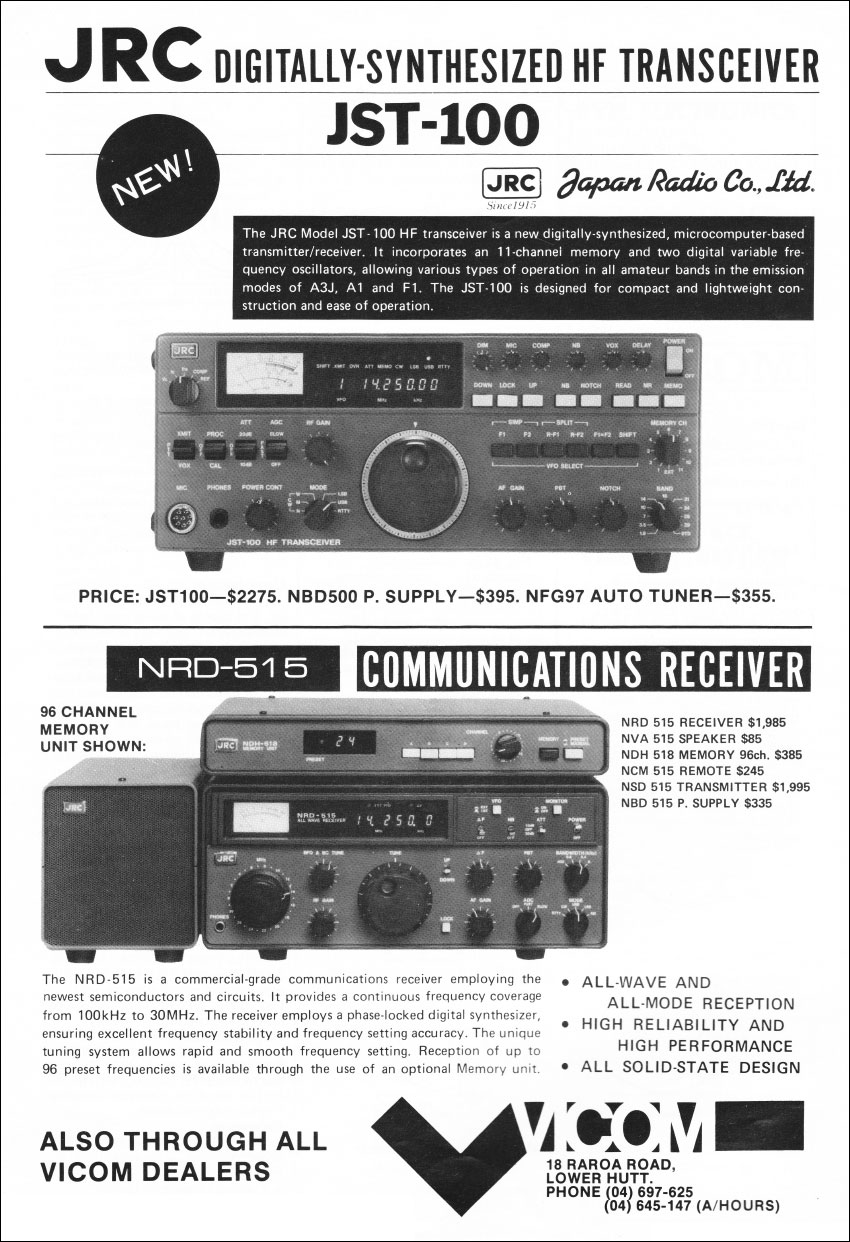
Break-In magazine, March 1983
Suggestions?
If you have suggestions on how to make the NZ Net better, or things you’d like to see covered in these updates, please contact ZL1NZ. You might even like to write something for the newsletter.
Thanks for reading, and I hope to hear you soon on the NZ Net!
—
Neil Sanderson ZL1NZ, Net Manager
New Zealand Net (NZ NET)
3535.0 kHz at 9pm NZT Mon-Fri


